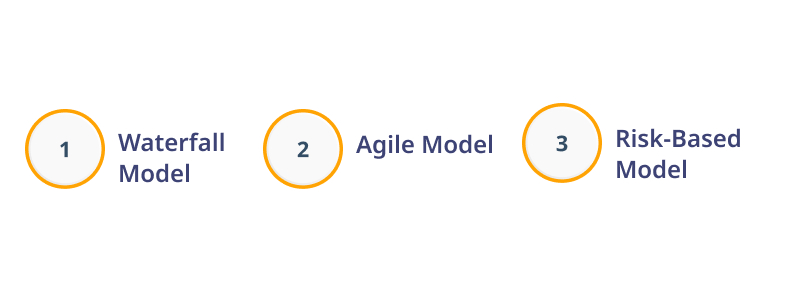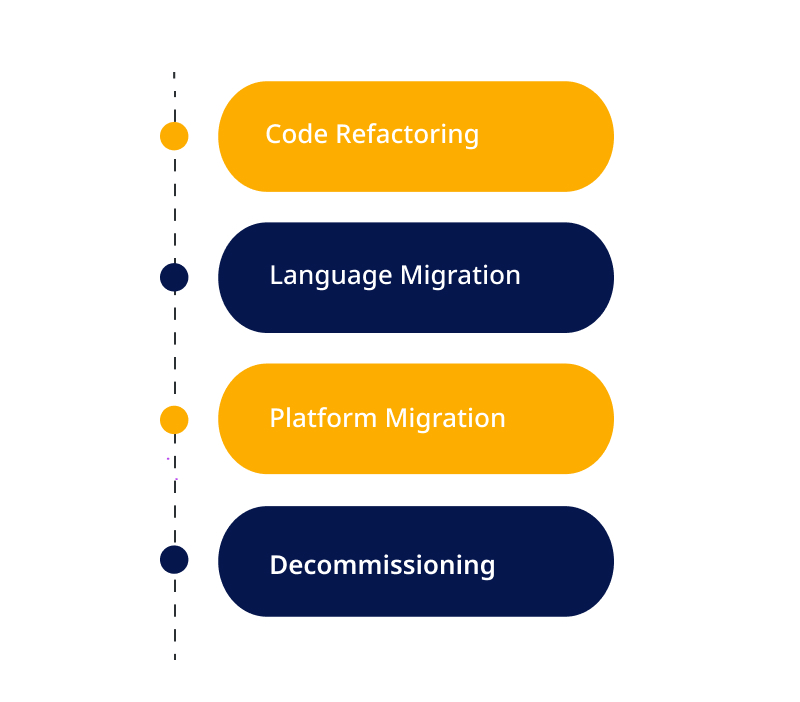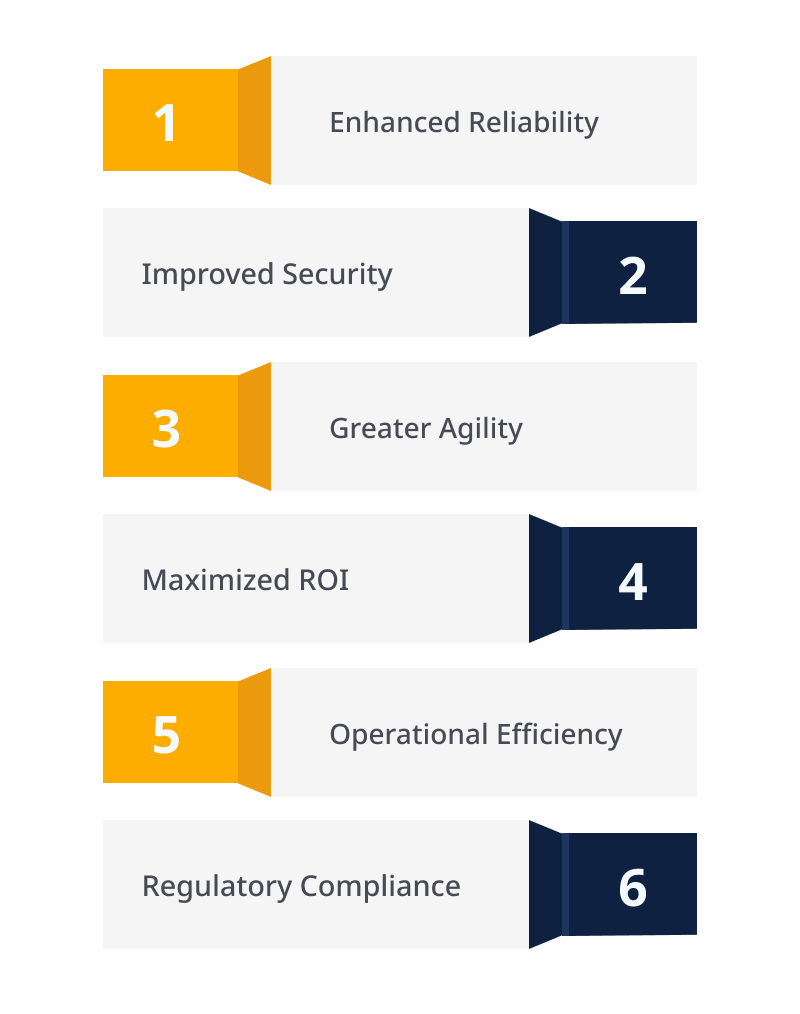Quick Summary
Software applications today form the digital foundations enabling enterprise growth, resilience, and competitive edge. However, without vigilant, ongoing maintenance extending through operational lifecycles, critical software assets rapidly accumulate technical debt – degrading system health, security, compliance, and strategic alignment over time.
Ultimately, neglected systems undermine productivity, innovations, and growth. Establishing robust software maintenance policies and procedures can maximize ROI on IT investments while fueling sustained success in increasingly complex, fast-evolving digital business ecosystems.
In our increasingly digital economy, software systems, and applications empower organizational growth, efficiency, and competitive advantage.
However, without vigilant software maintenance importance, critical software assets face progressive performance degradation, vulnerability risks, and failure to align with evolving business needs, leading to significant enterprise challenges.
As per recent surveys, nearly 90% of software lifecycle costs occur during maintenance stages. Also, over 200 billion dollars are spent annually on software maintenance globally.
Further, it is estimated that effective software maintenance strategies can reduce lifecycle costs by as much as 60%. This highlights why continual software maintenance is mission-critical.
Some key reasons include sustaining high software reliability, plugging security loopholes through regular updates, reducing downtimes via preemptive interventions, and adapting systems to market changes for innovation.
Organizations prioritizing proactive software asset maintenance are better positioned to realize their strategic and operational objectives while accelerating growth.
Types of Software Maintenance
Four broad software application maintenance services categories enable organizations to keep their software assets updated and optimized for business continuity and development:
1. Corrective Maintenance
Involves bug fixing, troubleshooting, and repairs after software failures to restore intended functionality and performance. It aims to address issues that crop up during operational use.
2. Adaptive Maintenance
This type of maintenance enhances software utilities and capabilities to align with evolving business process changes. It helps in customizations for new enterprise requirements.
Elevate your organization with our expert software maintenance services.
3. Perfective Maintenance
The focus here is software enhancement by adding new features, improving usability, or improving overall performance. It enables software vitality over time.
4. Preventive Maintenance
As the name suggests, this preemptively identifies potential failures to prevent them before they impact software proactively. It also mitigates emerging cyber risks with security controls.
Strategically approaching software maintenance leveraging these targeted methods is vital for continuous optimization, risk mitigation, and supporting organizational growth with stable and resilient software assets.
Also Read: Top 25 Custom Software Development Companies Offering Bespoke Solutions
The Significance of Maintaining Software Vitality
In today’s extremely competitive and dynamic digital business landscape, organizations cannot afford to let their critical software applications and platforms lag due to a lack of timely software maintenance importance.
Without proactive maintenance support, software assets face progressive performance and security degradation over time, directly impacting an enterprise’s operational efficiency, responsiveness to market changes, and competitive standing.
Some key reasons why ongoing software maintenance holds great significance include
Enhancing Reliability: Regular maintenance enables identifying and fixing defects and failures in software before they disrupt services. It proactively addresses vulnerabilities, improves stability, and sustains optimal performance.
Plugging Security Risks: Continuous updates and patches are vital to mitigate emerging cyber threats like ransomware, hacking, and data thefts. They also strengthen access controls. Neglecting this makes enterprises sitting ducks.
Facilitating Adaptability: Business and user requirements evolve rapidly. Maintenance incorporates necessary customizations for new functionalities, integrations, technologies, etc. This fail-proofs enterprises against market changes.
Maximizing ROI: Maintenance costs are far more economical than large-scale software replacements when systems degrade severely. It protects software investments.
Minimizing Downtimes: Preventive maintenance preempts failure incidents. Adaptive maintenance ensures alignment with upgraded infrastructures. Both minimize disruptive downtimes.
Future-proofing Systems: Regular modernization efforts keep software relevant despite fast-evolving landscapes. It prevents obsolescence risks.
When an organization neglects software maintenance’s importance, the risks outweigh the costs. Planned BI support and maintenance directly correlates with achieving both IT and business objectives.
Process of Software Maintenance
Executing robust software maintenance importance across the enterprise software landscape requires structured procedures encompassing the following phases:
1. Identification of Maintenance Needs
This phase entails collaborative efforts between business, IT, and software teams to fully identify, evaluate, and prioritize maintenance issues and requirements impacting existing software assets.
Activities include verification reviews, audits, technical assessment of vulnerabilities, and performance monitoring to pinpoint defects, risks, necessary upgrades, etc.
User feedback is also vital. Structured issue-tracking mechanisms enable documenting maintenance needs.
Ensure the longevity of your software with our unparalleled expertise.
2. Planning
Next, comprehensive maintenance plans are formulated based on identified needs while considering available resources, budgets, and organizational software asset roadmaps.
Detailed plans outline the exact maintenance scope, approaches, timelines, costs, human resource allocation, etc., while first prioritizing crucial and risk-critical issues.
Risk analysis is also done. Appropriate software maintenance models matching enterprise contexts are chosen here.
3. Implementation
Specialized software engineering teams then perform the maintenance tasks outlined in project plans – fixing complex coding defects, addressing cyber threats, migrating outdated platforms, or adding new functionalities per evolving needs.
Rigorous software development services best practices around SDLC processes, version controls, documentation, etc., govern implementation.
4. Testing
Post-implementation, end-to-end software testing verifies thoroughly that the system performs strictly as intended after maintenance activities.
Extreme corner case testing ensures stability. Specialized software testing teams around security, performance parameters, UI/UX, etc, validate that all maintenance goals are met.
5. Deployment
Once software assets have achieved all test pass criteria, the updated version is systematically deployed across the organizational landscape. Technical support and user training facilitate adaptation to changes during software swaps.
Well-designed maintenance processes amplified by skilled human capital are crucial for long-term software asset viability and continued evolution.
Also Read: Embracing The Future: How AI Transforms Software Testing
Software Maintenance Financial Landscape
Software systems and applications underpin enterprise growth in today’s digital ecosystems.
However, as technical debt accumulates over time without timely interventions, critical software assets progressively degrade – provoking failures, security breaches, non-compliance risks, and misalignment with business strategies.
Ultimately, organizations fail to tap the full transformative potential of their IT investments without a focused approach.
While the costs involved in dedicated maintenance efforts could seem significant upfront, they pay off manifold when considering loss events and modernization needs that technical debt triggers. Still, cost optimization is crucial.
Various non-technical factors increasing maintenance overheads include a lack of skilled resources to handle complex systems, hardware migrations to keep pace with technology shifts, and accumulating integrations with external apps/partners that impose adaptation needs.
On the technical side, factors like antiquated platforms, fragmented systems built hurriedly without holistic vision, and inadequate validations inflate downstream costs.
That said, some effective strategies for cost-optimized maintenance are:
- Instituting robust verification reviews, security audits and software QA & testing services protocols from initial builds.
- Architecting modular components with open standards for easier interoperability.
- Enabling rapid reconfigurations with cloud-native approaches.
- Achieving optimization and scale through consolidations rather than piecemeal apps.
- Building institutional expertise via specialized software COEs/partners.
- Tracking each software asset’s ROI potential versus the TCO.
- Identifying obsolete applications with replacement strategies.
With the right vision and best application maintenance companies, modernization roadmaps powered by expert teams help pioneer future-ready landscapes while maximizing ROI on existing IT investments – making software maintenance a key driver of enterprise resilience and sustained competitive advantage rather than a cost center alone.
Maximize ROI through our tailored software maintenance solutions.
Complex Challenges Faced in Maintaining Software
While software maintenance’s importance is undisputed, executing it effectively has its own complexities that dedicated strategies must address:
1. Legacy Systems
Most enterprises have legacy systems built on older languages lacking modern software engineering best practices. Maintenance gets challenging due to cryptic logic, poor documentation, and outdated platforms. Replatforming complex legacy systems requires balancing business needs, costs, and risks.
2. Skill Gaps
Specialized expertise is necessary for niche technologies, complex integrations, and large-scale landscapes. A shortage of qualified resources manifests in capability and bandwidth gaps to maintain certain software assets optimally. Investments in training, partnerships, and centers of excellence are crucial.
3. Downtime Risks
Maintenance activities like major version upgrades or platform migrations inevitably require downtime. Insufficient planning, testing, and fallback mechanisms can prolong disruptions – directly affecting business operations. The downtime costs can be massive, resulting in lost revenues, damages, and reputational risks.
Proactively addressing these software maintenance challenges amplifies organizational resilience, growth, and capability transformation powered by stable, secure, and optimized IT ecosystems. The long-term dividends outweigh the investments required.
Software Maintenance Strategic Approaches
To amplify returns on software investments, enterprises should institutionalize the following software maintenance importance strategies:
1. Proactive Monitoring
Robust real-time monitoring mechanisms leveraging AI and ML should track overall software landscape health, detect anomalies promptly, and trigger preventative interventions to forestall more significant problems.
2. Regular Updates
Instead of delayed reactive fixes, preventative maintenance via regular minor updates and patching ensures smooth software operations while rapidly plugging emerging security risks.
3. In-Depth Documentation
Detailed documentation around software asset lifecycles, architecture, operational procedures, etc., equips maintenance teams to troubleshoot and modify systems efficiently, thus minimizing disruptions.
4. Specialized Resources
Hiring niche experts or having dedicated software COEs builds institutional capacity to effectively manage complex, modernized, or highly customized systems amid skill shortages.
5. Cloud Enablement
Cloud-native approaches allow scaling on-demand while enabling automation and orchestration across environments, reducing maintenance overheads.
Well-defined maintenance policies and teams are crucial for long-term software asset viability and business success.
Innovative Models for Software Maintenance
Organizations must choose and tailor the most appropriate software maintenance importance methodologies aligning with specific contexts:
1. Waterfall Model
This structured linear model entails the sequential completion of phases in a software lifecycle before proceeding to the next, i.e., requirements, design, testing, implementation, etc. Its planned approach suits mature software products. During maintenance, unambiguous requirements aid neat enhancements.
2. Agile Model
Based on iterative delivery and continual improvements, Agile software maintenance is more adaptable when requirements are unclear or keep evolving rapidly. Using sprints, incremental enhancements are released faster while accommodating changes through close stakeholder collaboration.
3. Risk-Based Model
This model leverages risk analysis techniques to determine event probabilities and potential impact. Accordingly, mitigation efforts are focused on addressing high-risk defects and vulnerabilities first.
Future-proof your business applications with our proactive maintenance.
Choosing the optimal eCommerce website maintenance methodology reduces disruptions, enhances ROI, and keeps software relevant to enterprises’ strategic evolution. The model followed during the initial professional software development services phases also plays a key role.
Software Reengineering
Over time, sub-optimal software resource allocations, changing teams, and technical debt accumulation severely degrade enterprise software assets. Gradually, maintenance costs outweigh the benefits.
Here, software reengineering comes in – rebuilding systems from scratch via:
- Code Refactoring: Restructuring software by improving internal structure without altering functionality. It enhances maintainability.
- Language Migration: Converts legacy systems to modern, developer-friendly languages like Java by leveraging automated tools while retaining functionality.
- Platform Migration: Involves moving systems across improved distributed and cloud-based infrastructures to enable scaling, automation, and frequent updating.
- Decommissioning: Old software components that provide negative returns on enhancement investments are decommissioned and replaced with new solutions.
When legacy software consulting services systems hinder agility, software reengineering recreates them as future-ready assets aligned to business needs – something bolstered software maintenance cannot achieve. The improved ROI and TCO justify the investments.
Benefits of Maintaining Software
Despite substantial investments, application maintenance services benefits deliver manifold dividends, including:
1. Enhanced Reliability
Proactive maintenance enforces software stability, preventing failure incidents and minimizing disruptive downtimes – crucial for business continuity.
2. Improved Security
Regular patches and upgrades plug vulnerabilities otherwise prone to cyberattacks in unmaintained software. It improves resilience.
3. Greater Agility
Adaptive maintenance incorporates system enhancements to facilitate new technologies, integrations, and changing needs.
4. Maximized ROI
Sustained relevance and performance of software systems justifies maintenance costs compared to risky and expensive replacements.
5. Operational Efficiency
Smooth software operations minus disruptions impact other workflows that rely on systems output and interconnections.
6. Regulatory Compliance
Updates facilitate meeting evolving compliance needs – otherwise attracting significant fines.
Software maintenance amplifies the business value realized from investments made in enterprise digital assets.
Trust us to keep your software at its best with dedicated support.
Conclusion
Software applications and platforms power enterprises’ innovation, growth, and competitive advantages in today’s highly dynamic digital business ecosystems.
However, vital software assets rapidly accumulate technical debt without vigilant software maintenance – degrading system health, agility, and compliance over time. Ultimately, neglected software undermines productivity, growth, and security.
Conversely, organizations prioritizing continuous software maintenance improvements reap manifold dividends, including sustained stability, optimal ROI on IT investments, and alignment with evolving business landscape needs. After all, proactive care of business-critical software assets determines enterprise resilience and leadership.
Want to ensure your software systems provide lasting strategic differentiation? ValueCoders’ experts can formulate comprehensive maintenance strategies leveraging leading methodologies, specialized resources, and tech innovations like AI to future-proof your IT landscapes. Contact us today to evaluate your specific needs.














